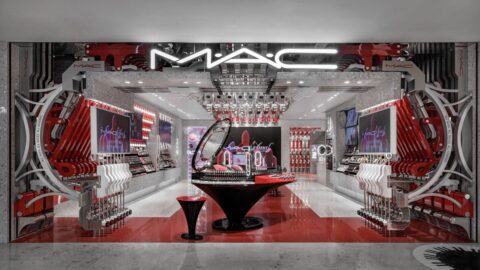Retailers that want to personalize the shopper experience will find a receptive audience: 49% of consumers are more than willing to opt in to receive personalized communications via SMS, email or social media from the brands and retailers that they know, according to Periscope By McKinsey. But for a significant group of consumers, personalization still doesn’t feel personal: 41% of shoppers say that most personalized messages still feel like mass marketing messages that were not created with their specific needs in mind. These shoppers noted no discernible difference in the relevance of personalized versus non-personalized communications received from retailers and brands they visit often.
The study, titled: The Art of Personalization — Keeping it Relevant, Timely and Contextual, surveyed consumers in four mature e-Commerce markets — France, Germany, the UK and the U.S. in March 2019. Respondents were aged between 18 and 69 and evaluated by age, category and gender.
U.S. shoppers are the most likely to sign up for personalized messages, at 55%, followed by consumers from the UK (52%), Germany (46%) and France (44%). U.S. shoppers also were the most prepared to opt in for personalization; indeed, one-fifth (19%) say they frequently do so. In contrast, consumers in the UK (15%), France (15%) and Germany (11%) are more inclined to keep brands and retailers at arm’s length, only opting into personalized messaging on a selective basis.
French shoppers had the largest group (47%) feeling that personalized messages still carried a “mass marketing” taint, compared to only 36% of U.S. shoppers.
Despite this current personalization shortfall, individualized communication efforts do prompt 31% of consumers to act immediately, either by checking out an offer or making a purchase. U.S. (37%) and French (32%) consumers are the most likely to act on personalized prompts, while German (27%) and UK (26%) consumers lag slightly behind.
Personalized Deals Top Incentives For Shoppers To Act On Messages
As is typical of consumers everywhere, price continues to be a prime motivator throughout the shopping journey. Consumers in the U.S. (61%), the UK (59%), France (54%) and Germany (49%) all felt that the top motivator to act on a personalized communication was if the retailer delivered a personalized offer that saves them money.
Messages about products they wanted to buy provided the next-highest motivating factor for consumers in the U.S. (47%) and UK (45%), followed by communications about products in their price range (41% for both the U.S. and UK). Messages about products that match their personal tastes were the number-two motivating factor for consumers in Germany (48%) and France (47%).
Shoppers Want Product-Heavy Personalized Content
When it comes to the type of personalized content received, shoppers in all countries said they most wanted to receive messages about products relating to their interests.Recommendations related to a previous search also ranked in the top three responses for U.S. (43%) and UK (39%) shoppers, while French (44%) and German (40%) shoppers prefer referring back to an exact product for which they’d previously searched.
Personalized updates relating to product availability and/or price proved particularly popular in all four markets, taking the second spot with 42% of shoppers in Germany and the UK, and they were identified as the third most relevant message type by 44% of consumers in France and 42% in the U.S.
Spontaneous Communication, Location-Tracking Messages Still Spook Shoppers
Unsolicited communications from companies they don’t know was a top issue for U.S. consumers (41%), and the second-biggest cause for concern for German shoppers (39%). However, the eeriness of location-tracking messages caused the most anxiety for German (40%) and UK (40%) shoppers and was listed as the second greatest cause for apprehension among French (41%) and U.S. (40%) consumers.
Shoppers also are still uncomfortable with getting a message within seconds of purchasing or having conducted an online search — it’s the second-most likely cause for concern among UK consumers (38%), and third-highest among French (37%) and U.S. (38%) shoppers. Cross-sharing of shoppers’ browsing history also was the top issue for 42% of French consumers, while the cross-sharing of profile information was the third-most likely tactic to turn off 37% of German shoppers.
Across all four countries, women were more likely than men to find receiving location-based messages more intrusive and unsettling.
As far as getting the shopper’s attention in a good way, SMS/text messages generated high engagement levels with shoppers everywhere. In the U.S. and France, it was the channel most likely to elicit an “open and read” action, at rates of 42% and 45% respectively. German shoppers actually read texts at a higher rate than their American and French counterparts, at 57%, but messaging apps such as WhatsApp get the most attention at 67%.
UK shoppers reviewed 41% of communications sent via messaging apps, which marked the highest engagement rate of all channels accessed in the country, ahead of SMS (40%) and email (39%).













